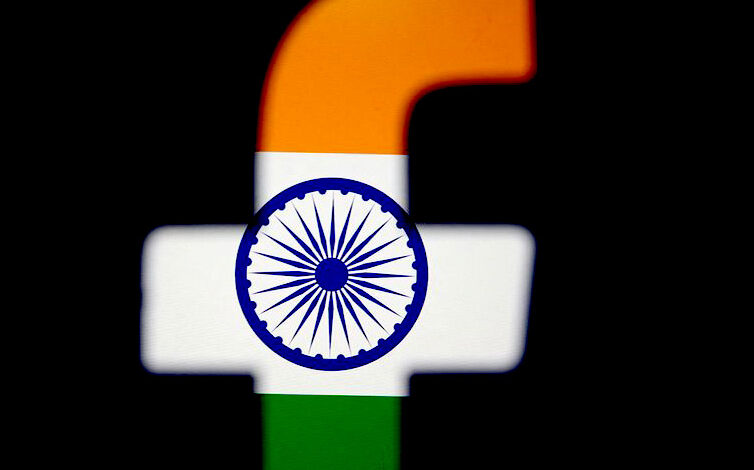Facebook’s development problems in India: too much nudity and too few women

New Delhi (Reuters) – When Meta Platforms revealed Facebook’s (NASDAQ:META) first-ever quarterly decline in daily users on February 2, the company’s finance head cited higher mobile data costs as a distinct factor inhibiting growth in India, the company’s largest market.
The same day, the U.S. technology company revealed the results of its own investigation of Facebook’s business in India to an internal employee forum. During the two years till the end of 2021, the study identified various issues.
A previously unreported study from Meta indicates that many women have avoided the male-dominated social network out of concern for their safety and privacy.
“Concerns about content safety and inappropriate interaction inhibit women’s use of Facebook,” according to a report obtained by Reuters that outlined the platform’s primary obstacles.
“Meta cannot succeed in India if it abandons women.”
According to the research, which was based on surveys of tens of thousands of people as well as internal user data, other obstacles included nudity content, the perceived complexity of its app design, local language and literacy barriers, and a lack of appeal among internet users seeking video content.
Facebook’s growth began to plateau last year, when it added a few million users over the course of six months in a country of approximately 1.4 billion people, significantly trailing sister apps WhatsApp and Instagram, according to a report stating: “FB has grown more slowly than the internet and other apps.”
When asked about the study, a spokeswoman for Meta stated that the firm constantly invests in internal research to better understand the value of its products and to discover opportunities for improvement.
“However, it is deceptive to portray a seven-month-old study as an accurate or exhaustive depiction of the state of our business in India,” they continued.
On a February 2 teleconference with analysts to review results for the fourth quarter of 2021, Meta’s chief financial officer, Dave Wehner, did not mention the primary Indian difficulties detailed in the research.
Wehner stated that competition and comparisons to recent quarters, when COVID resurgences improved user engagement, hampered Facebook’s user growth in Asia-Pacific and other regions. He noted higher mobile data charges in India as a “unique” disadvantage.
When asked why the obstacles to growth identified by Wehner differed from those identified in the research, the spokesperson referred to a Meta filing from April, during the company’s first-quarter earnings, in which it was stated that Facebook users in India, Bangladesh, and Vietnam represented the top three sources of growth in daily active users in March compared to the previous year.
Facebook’s success in India has far-reaching implications for Meta, which has lost roughly half of its value this year amid a broader tech sell-off and is under the scrutiny of investors and analysts who are concerned that its growth in potentially high-growth developing markets is beginning to slow.
After a decade of tremendous development, India has more Facebook users than any other nation, according to a study that estimated the number at around 450 million as of November.
“Teams within the organisation should assess their strategic position and growth prospects in India. India’s outcomes could influence global outcomes. “
FAMILY DOESN’T ALLOW FACEBOOK
A presentation intended to assist Facebook’s researchers and product teams revealed the internal study, a “high-level summary of the growth trends” in India. According to the report, “gender imbalance” was a significant issue that Facebook had been attempting to address in India for years, with poor success.
In India, 75 percent of Facebook’s monthly active users were men in 2013. That proportion was discovered by the researchers.
“While there is a gender disparity in internet usage across India, the disparity among Facebook users is considerably more prominent,” the report stated, adding that online safety concerns and societal expectations are among the factors discouraging women from using the network.
The researchers discovered that 79% of female Facebook users “expressed concern over content/photo misuse,” while 20-30% of all users were believed to have encountered nudity on the platform within the last week in the predominantly conservative country.
According to a poll conducted in August 2021, India placed first in the latter category; approximately 10 percent of users surveyed in the United States and Brazil indicated they had seen nudity in the prior week, for example, and less than 20 percent in Indonesia.
According to an internal analysis, “negative content is more widespread in India than in other countries.”
Family disapproval – “Family doesn’t allow Facebook” – was a primary reason women reported for not using Facebook, according to the study.
The spokesman for Meta stated that the online gender disparity was an industry-wide issue and not exclusive to its services.
Since 2016, Meta has more than doubled its global safety and security staff to over 40,000 people, and between January and April of this year, over 97 percent of adult nudity and sexual activity content was removed before it was reported.
Where do you live?
One research slide displayed a photograph of an Indian woman going down the street while wearing a saree that covered her head and face, a customary practise in many parts of India.
Next to this photograph was the profile of a woman who claimed to have received 367 friend requests from strangers, along with a slew of remarks such as “very lovely,” “where do you live,” and “you look good.”
According to the woman described, the comments ceased once she utilised the “closed profile” feature, which Facebook introduced in 2020 in India to allow users to block sight of photographs and posts by non-friends.
By June 2021, 34% of female users in India had accepted the function, but “radical product improvements” were required to solve the problem of poor Facebook adoption among women.
Globally, online safety activists have criticised Facebook for not doing enough to protect women from abuse and harassment. In 2019, the site stated that it employed a team of employees to “ensure the safety of women” by removing information considered harmful using technological technologies.
Meta has launched a Women’s Safety Hub and other privacy tools, including a profanity filter, to assist female users in India in remaining safe online. Since 2021, more than 45 percent of entrepreneurial Facebook Groups in India have been formed by women, according to Meta.
WHATSAPP GETS THE CROWN
According to internal studies, Facebook’s growth in India began to slow last year. The platform’s primary appeal has been connecting with friends and family, but non-Facebook users are now predominantly utilising the internet to see images and videos, according to studies.
In comparison to WhatsApp’s 71 million and Instagram’s 128 million users, its annualised growth rate from May to October 2021 was only 6.6 million, according to an internal PowerPoint that visually highlighted the slowdown.
By November, the number of Facebook users in India had reached 447 million, falling behind that of the Meta sibling apps. In India, WhatsApp, which Facebook purchased in 2014, had 563 million users. Instagram was acquired in 2012 with 309 million users.
The decline contrasts with Facebook’s rapid expansion during the past few years. According to the report, the platform had fewer than 100 million users in India in 2014, but that figure doubled by 2017.
The spokeswoman for Meta declined to comment on the number of users, stating that the company does not release country-specific data. They stated that Facebook was “clearly boosting the significance of video.”
According to the report, less-educated people are another demographic that is underrepresented on Facebook. The platform struggled to handle the demand for information in India’s numerous local languages, and many users noted the app’s complexity and absence of tutorials as deterrents.
The study indicated that between 2017 and 2020, India’s monthly online users as a percentage of the population quadrupled due to lower data rates, while the percentage of internet users who reported using Facebook decreased during the same period.
A post accompanying the report stated, “India now has more Facebook, WhatsApp, and Instagram accounts than any other country in the world.” However, ongoing progress in India is confronted with numerous obstacles.
(GRAPHIC-Failure to Use Facebook, https://graphics.reuters.com/META-INDIA/FACEBOOK/egvbkxqzopq/chart.png)





